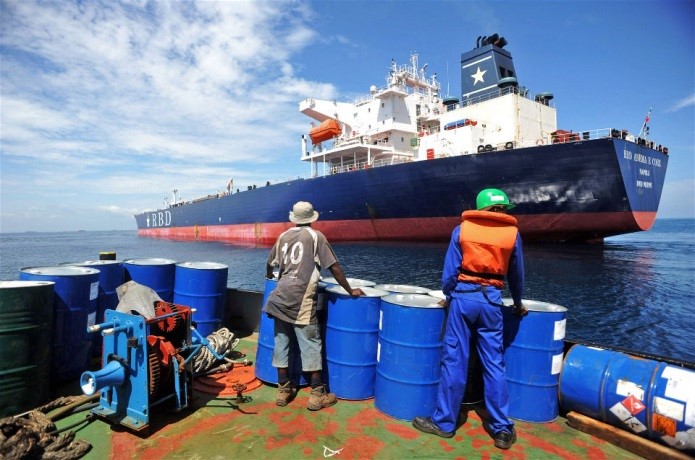 The trends in African piracy are changing, though not as quickly or as dramatically as media reports suggest. Western Africa's Gulf of Guinea and eastern Africa's Gulf of Aden remain the continent's major areas of pirate operation, but since 2012 attacks have become more common in the west than in the east. This development is explained less by a marked increase in West Africa, where attacks have risen only slowly and steadily, and more by a sharp decrease in East African piracy. More important, these trends are determined partly by the capabilities and opportunities afforded to the pirates operating in each region as well as the constraints under which they operate.
The trends in African piracy are changing, though not as quickly or as dramatically as media reports suggest. Western Africa's Gulf of Guinea and eastern Africa's Gulf of Aden remain the continent's major areas of pirate operation, but since 2012 attacks have become more common in the west than in the east. This development is explained less by a marked increase in West Africa, where attacks have risen only slowly and steadily, and more by a sharp decrease in East African piracy. More important, these trends are determined partly by the capabilities and opportunities afforded to the pirates operating in each region as well as the constraints under which they operate.
The new trend in pirate activity began with the decline of eastern piracy. And understanding its decline requires a basic knowledge of how eastern piracy operates.
Eastern piracy generally is more structured and organized. Pirates are hired and financed by outsides parties, who usually do not participate directly in attacks. Rather, they assemble the pirate crews, provide supplies and equipment, financially support crewmembers and provide maintenance of hijacked vessels and hostages. They also hire informants in a variety of capacities to select viable targets. Ideal targets are easy to board and yield potentially high ransoms. High ransoms are particularly important; failing to secure money at the end of an operation is catastrophic for the operation's financiers.
Thus, interdiction efforts have been effective through denying pirates the opportunity to successfully capture ships and demand ransoms. If the pirates cannot get their ransoms, their operators are far less likely to be able to afford future operations.
The most direct interdiction efforts have included deploying foreign naval forces and applying best practices aboard vessels, such as installing a "citadel," a hardened room in which the crew is safe and can shut down the engines to prevent pirates from moving the vessel. Avoiding dangerous areas and the rising use of private armed guards on ships have also made ships less susceptible to pirate attacks.
These efforts successfully brought down the number of pirate attacks in 2011 -- as did the inability of operators to secure ransoms quickly. However, it was not until early 2012 that further counterpiracy operations led to the collapse of the organizations behind the attacks. In May 2012, EU Naval Force helicopters conducted aerial raids on staging beaches used by pirates, destroying boats, fuel and supplies that had been assembled there for use in their next campaign. This was a serious setback for pirate financiers, who lost entire investments without even a chance of generating a profit.
Meanwhile, authorities in the Somali region of Puntland mounted several successful land-based raids on pirate havens. Although this activity by local authorities on land was short-lived, the fact that it coincided with the helicopter strikes made a huge difference.
Notably, the conditions at sea were particularly rough in 2012. Many pirates were killed and equipment lost. The attacks that were successful that year were hampered by long-lasting negotiations, causing financiers to continue paying wages of pirate crews guarding ships, as well as supplies to feed the hostages that were the subject of ransom negotiations.
This caused financiers to be caught in a cycle of diminishing resources, relegating their employees to targeting smaller and less protected vessels, which yield comparatively negligible profits. While pirates continue to be active in the Gulf of Aden, the chance that they will successfully hijack large vessels has been seriously limited, and without the ability to introduce new resources while protective measures remain in place, the threat they pose is very unlikely to rise back to levels observed from 2008 to 2011.
Fewer Constraints
Piracy in West Africa continues to rise slowly, and the constraints placed on pirates in the east are not nearly as prevalent in the west. Currently there is a dearth of military resources deployed in the Gulf of Guinea, but more important is the fact that the tactics that are effective in East Africa are not as effective in West Africa.
Piracy in the Gulf of Aden typically targeted ships passing through the area. This allowed organizations to assemble convoys or to move their routes into safer areas. Vessels in West Africa often operate near the shoreline. Attacking these slower vessels requires fewer concentrated resources than the long campaigns at sea that pirates undertake in East Africa, although some entrepreneurial pirate groups along the West African coast have already ventured as far as 200 nautical miles into sea to target deep-water tankers.
Like Somali pirates, West African pirates engage in hijacking for ransom. However, West African pirates more often target ships specifically to steal their cargo, such as petroleum products, which can easily be moved through illegal Nigerian oil markets. They also kidnap crews and sell them to human trafficking networks. This enables them to operate more autonomously and more cheaply than their more organized and structured eastern counterparts. It also enables them to work more quickly, avoiding long negotiations that tie up resources.
Ultimately, without capable local security forces and foreign naval assets, West African pirates are less constrained the eastern pirates. As a result, western piracy will continue to rise -- at least in the short term.
Courtesy : Stratfor (www.stratfor.com)